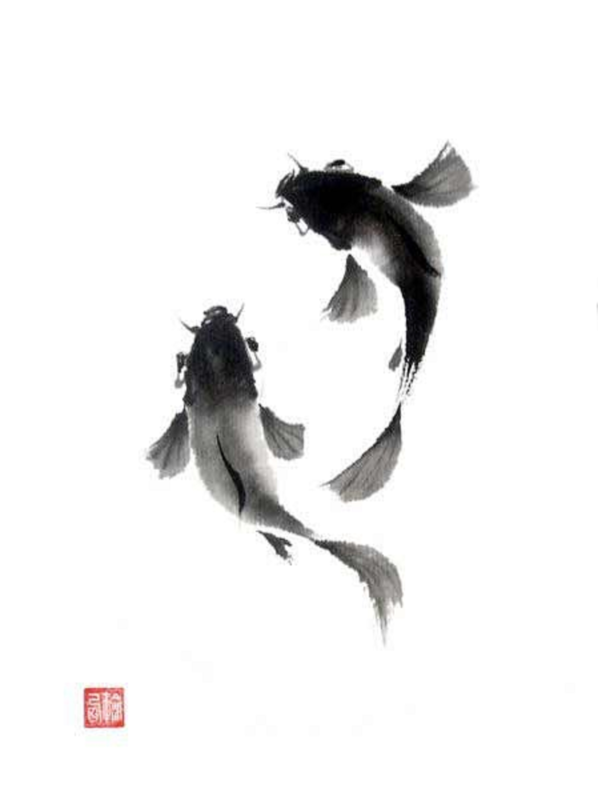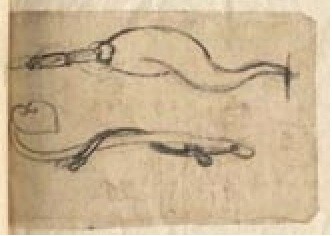-
Posts
3,714 -
Joined
-
Last visited
-
Days Won
100
Content Type
Profiles
Forums
Events
Store
Downloads
Gallery
Everything posted by Spartancrest
-
Florian I have a guard of a similar design and one not mine. Image of one almost identical to your picture and a display board I made in the same shape. Still looking for a temple with the design like the original post - could be what is represented?
-
Adam you may have something there with the temple eaves being part of the top and bottom designs - this picture is not exactly the same design but I have noticed most temples have a unique ornament at the corner of the roof and carved eaves. It may even be possible to find a match on a temple from the area of the tsuba's manufacture, if that is in fact what it represents?
-
Adam - Like having bats in the Belfry - I think it has a different meaning in the Western world!😇 There is another design on the guard that has already been described as crossed 'hammers' they reminded me of guard I have, that I call a teapot but is in fact a Taiko drum with an attached drumstick - could they be crossed drumsticks? The hitsu-ana being used to represent drums at the same time? It would be a clever use of the hitsu as a design element. Maybe I am just 'banging on'
-
Back to the original image - It is a bird, but if you go out at night it could be a bat - who could tell the difference in the dark!😉 What seems to be the problem is which end is the head and what the tail? Vague!
-
Hi Dick I am inclined to agree with Grey. Are they weighty? Bit unclear but are they pins or loops underneath? If they had flat bottoms they could be calligraphy paperweights 文鎮 (bunchin - pronounced "boon-chin"). These are often beautifully crafted with whimsical decorations for holding the parchment steady while the calligrapher wields the brush. The pins/loops may have been added to repurpose them - big fancy buttons? See topic -
-
Hi Grev I found this reference on Noh masks. The local macque monkey as you probably know are called 'Saru' "A collective name for Noh and kyōgen used until the start of the Meiji era. Sarugaku derives from sangaku, which came to Japan from the Tang Dynasty during the Nara era and was combined with ancient Japanese comedies. Sarugaku flourished during the Heian and Kamakura eras, and was at the time strongly comedic and broad based, including skits, acrobatics and magic. In the middle of the Kamakura era Sarugaku split into Noh, with a more serious dramatic nature, and kyōgen, with more comedic dialogue, and the two began to be collectively known as Sarugaku. After that, until the end of the Meiji era both Noh and kyōgen actors were called Sarugaku, but during the Meiji era when Noh began to receive the support of the nobility, the term saru (or “monkey”) fell out of favor, and the two began to be called nohgaku." It may be a tongue in cheek poke at taking life too serious, or may show what the owner prefered as far as entertainment - just a theory.
-
Hi Yas, yes I saw the glued one last week on Jauce, no bids at all! I have seen prices of $800 US. for one, that is taking someone to the cleaners! Yahoo and Jauce must be linked as items appear on both sites and finish at the same time. Getting back to Roger, there were over 41 bids on that first auction before it was cancelled, if they were by the auctioneer or owner why so many small increments? Jauce already has the ability to let the owner put in a reserve or starting price. I have 'won' auctions a few times, then been told the bids were closed at the last second [ in reality up to a day later by the seller] Am I naive to believe there should be some ethics in auctions? Getting back to the gist, Yas has shown that there are a lot of these souvenirs out there so just be aware and if you do happen to like them, try getting them for the cheapest price.
-
Yas I see the dealer pulled the auction at 25,000 yen - not enough money for him? I also see it is relisted today with starting bid of 1,000 yen - the dealer is persistent! [he should have taken the money offered]
-
I have been following these cast guards for literally years now and am often surprised at what people are prepared to pay for scrap metal. Is it the false advertising of "Edo period" is it the shape - perhaps the poorly cast mei that is more often than not illegible ? It can't be the rarity, they turn up week after week. I do hope the members of NMB are not active in this auction, the starting price of 1,000 yen was already above it's value and that only because of the storage box included. [It is missing the cardboard box it came out of the factory with.] (current bid at twelve hours from finish is just over 16,000 yen) https://www.jauce.com/auction/u389417633
-
I like the first, top left love the shape and the centre bottom with the ten-zogan - far right bottom is as you say cast, even so there are some good casts and very poor casts yours looks all right. I usually come across three or four of these cast dragons every week in various metals though more usual in cast iron - today I can find only this one. [is that good or bad?] https://www.jauce.com/auction/t568921943
-
I agree with Chris Sch - a bad artist. Or at least a confusing one.😬 Sure has got a lot of speculation going - never a bad thing.
-
Anyone got a tail docker? 😉 What is this fifth leg business? Anyone can see it has two long legs on one side and two short ones on the other - obviously lives on the side of a steep mountain and can't therefore walk anti clockwise or it would fall down the mountain.🤪 PS you will note the long tails of the Sidehill Gouger and Dahu http://mythologicalbeastiesandco.blogspot.com/2010/09/sidehill-gouger.html
-
Adam I came across this today in a sold book of metalwork designs: The Ruyi looks closer to the menuki set with the long cords. The image is blown up from a very small photo so the resolution is poor: The link is to the sold book with some page images. http://www.morra-japaneseart.com/books/archive-of-books/1788-various-artists-tsuba-designs.html And just to prove Ruyi do appear on tsuba, there is an image from an old ebay sale.
-
I think it is a goat, the horns are short not like an Ox, this guard has a similar layout : The resolution is not great but it is an old file. There is also a native Japanese goat/antelope the Serow. Both sexes have short, backward-curving horns.
-
I just found this half finished hobby piece. https://www.jauce.com/auction/s774163452 The asking price is a bit out of the ball park. Does suggest the design is still popular.
-
I am with Grev - it's real, but personally I don't like the scale of the bamboo and the Tigers head "needs work". I like the shape. If it feels good to you that's what you should act on. [In my opinion the dealer has a much better piece with "cherries and mushrooms" though the signatures are worn]
-
Strickly speeking the depiction is in Japanese. = Hō-ō 鳳凰 or Hou-ou, Ho-o, Hoo-oo. the Asian phoenix, as you can see from the various spellings you have some choice! The Hō-ō has nothing to do with the Egyptian or Greek mythological 'bird" There is a link to find out more here : https://www.onmarkproductions.com/html/ho-oo-phoenix.shtml I would agree with both Jean and Bruno - it looks a cut above the average. A lot of late Mino were made much more crudely.
-
Yas Do you think the laser one was good before it was 'cremated'? Image is too small to see very well. It may have been worth more than it is now! 😬 I have not seen Lasered mei before - waterjet and cast in yes - all very lazy. If you intend to fake put some effort in with a chisel! 😄 Roger Thanks for the comment - I know how Yas must struggle with Google Translate - it is not so great. Have you tried looking up from the Japanese 'found in an old trunk' -Google comes back with 'found in an old Elephant' [that would explain why so many tsuba require a good clean!😷]
-
The Mon looks like the crossed feathers of the Asano clan - very famous for the story of the 47 Ronin [ not the movie with Keanu Reeves, that was mostly Hollywood crap] The guard looks to be from the period, but as the Ronin incident is so famous I have no doubt many 'authentic' guards were made. I must say I like the robust look of your guard. Link to Wikipedia - https://en.wikipedia.org/wiki/Forty-seven_rōnin I visited the graves of the Ronin back in 2014 and found the place very moving - even the pool where they washed the head -The entry fee was a novelty, we don't pay to enter cemeteries very often!
-
Yas These 'Miochin/Myochin' copies are Nambu Tekki - paperweights/souvernirs. Produced in the city of Morioka in Iwate prefecture. I do believe most other copies are from China - but some of the better copies I think are still made in Japan and even in America of all places.
-
I have posted an extract from an observation made over a hundred years ago previously about 'forgeries' As well I have with the help of Steve M. found one firm making cast iron guards called Nambu Tekki (南部鉄器) There are new copyists poping up all the time - some are truly junk whilst others would pass un-noticed if you didn't have a close look. Just check this link - https://www.jauce.com/user/touki_souma?search=tsuba - at least there are so many the same, you automatically know they are fakes. These are rather expensive replica guards - so expensive in fact you could find an original at a comparable price with a bit of looking around. https://www.jauce.com/user/sekiblade2018?search=tsuba
-
Greg F I have just over thirty individual images of this type, most with dimensions. some are from old sources so a bit grainy but clear enough to disern that they are not duplicates. Send me a PM if you would like me to forward some or all.
-
Military war era swords sometimes had fuchi, tsuba and even spacers/seppa stamped with production numbers or arsenal markings, not all pieces were marked. Different marks were used in different factories - some pieces were matched so the sword, tsuba and fittings all had matching numbers. With others it could mean a production type, as styles varied over time as well as by the branch of the military. NMB link to a post on arsenal marks here There is a good link to WWII swords here https://www.warrelics.eu/forum/Japanese-militaria/ija-type-95-nco-sword-info-228172/
-
Brian it does have some weight to it despite its small size, you could be right. It could be an attempt at humour, a feather holding down papers!
-
I have had this little 'object' for about four years - It is very similar to a nice set of menuki that I also have but this thing is easily three times as large - any ideas? It looks to have lost a bit of ten-zogan and is hollow like a menuki. kind regards.





















